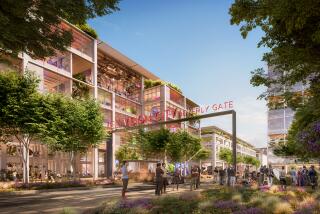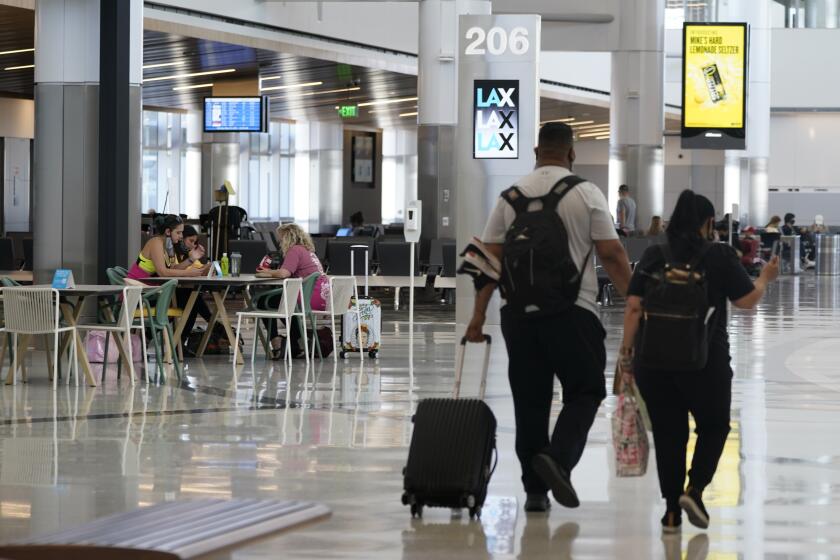Project Meets Protest
- Share via
Trying to limit plans for 2,500 homes next to them, about 280 residents of Irvine’s Turtle Rock gathered in a neighborhood park Sunday afternoon to protest the size and the location of the Irvine Co. project.
The developer, Orange County’s largest landholder, is approaching the final stages of obtaining city approval to build the homes on 1,500 acres wedged between the Turtle Rock community and the city of Newport Beach.
At Sierra Boca Park, leaders of the grass-roots protest group Irvine Residents for Responsible Development urged residents to attend planning and council meetings and object to the proposal as it goes through city reviews, which start this month.
“It’s not only our right to tell them what we think about the development, it’s our responsibility,” said John Greene, a board member of the protest group.
The unnamed project, referred to only as Planning Area 27, is important to all Irvine residents, Greene said, because it signifies the first hillside development within Irvine.
“This sets a model for all the others. It’ll have great impact,” he said.
The group, which consists of Turtle Rock residents worried about developments throughout the city, is concerned mainly with road congestion, crowding in schools and the loss of pastoral views from their homes.
Some residents said they are so concerned about the reported 40% increase in traffic through Turtle Rock that they have started looking elsewhere to reside.
“It’ll get so crowded, so loud, it just won’t be the same,” said Janis Morris, a Turtle Rock resident for 27 years. She said she is looking at homes in Carlsbad and Escondido in case the project is approved as is.
“The fact is the streets are already busy. The cross guard sometimes struggles to get the children across the street,” said Gisele Grabowsky, 42, a Turtle Rock resident for two years. “It’s going to be unacceptable.”
Grabowsky and others said traffic, noise and concerns about the safety of their children also will spoil the neighborhood picnics, the Halloween parties and the evening walks that the neighbors share.
The next few months will be an important time for the group. Organizers have met every two weeks with the City Council and have submitted an alternative plan, which reduces the number of housing units from 2,500 to 1,800. It also moves most of the development behind a ridge, closer to the San Joaquin Hills Transportation Corridor.
Public comment on the draft environmental impact report on the Irvine Co.’s proposal ended last month. Now Irvine’s community service, transportation and planning commissions must review the project. The City Council is expected to pass final judgment this summer.
Turtle Rock residents say the draft report underestimates the increase in traffic and makes assumptions about road widenings and other highway actions not yet approved. “The traffic component is severely flawed,” said Don Campbell, a board member of the group.
Michael Le Blanc, an Irvine Co. senior vice president, counters that city staff has studied the impact on traffic and found that, through road widening and new streets, the road system through Turtle Rock will continue to operate as it has been--at 90% capacity or less.
“The issue of traffic has been answered in a responsible fashion,” Le Blanc said.
The city staff’s response to the protest group’s concerns will be made public May 17.
Turtle Rock residents said they also are concerned that the failure to build a school immediately in the new neighborhood will cause overcrowding at theirs.
The Irvine Co. plans to build a new kindergarten-through-8th-grade school on the site, but residents say construction won’t begin until there are several hundred students living in the community.
The developer says the two new schools opening elsewhere in Irvine this fall will provide more than enough space for students before the new school is constructed on the site.
Though council members have not voted yet, some are concerned about the project’s size.
“I think the number of units is a little high,” said Mayor Christina L. Shea. “I think something around the 2,000 range might help circulation. I’m a strong proponent of less density because I think it’s better for the community in the long term.”
But the Irvine Co. has said that reducing the number of units in the project would jeopardize the city’s open space agreement with the company. The agreement stems from a 1988 initiative voters adopted to require 9,500 acres of open space in the city. In return, the Irvine Co. would be allowed to develop a certain number of housing units.
“If the city does not follow though on its agreement, it would jeopardize the transfer of open space,” Le Blanc said.
He also criticized the protest group’s alternative housing plan.
“Basically it shoves all the houses in great intensity along the [toll-road] corridor,” he said. “It’s almost a product of an attitude that says, ‘I don’t want to see any development at all.’ How does that achieve a goal of quality planning?”
More to Read
Sign up for Essential California
The most important California stories and recommendations in your inbox every morning.
You may occasionally receive promotional content from the Los Angeles Times.










